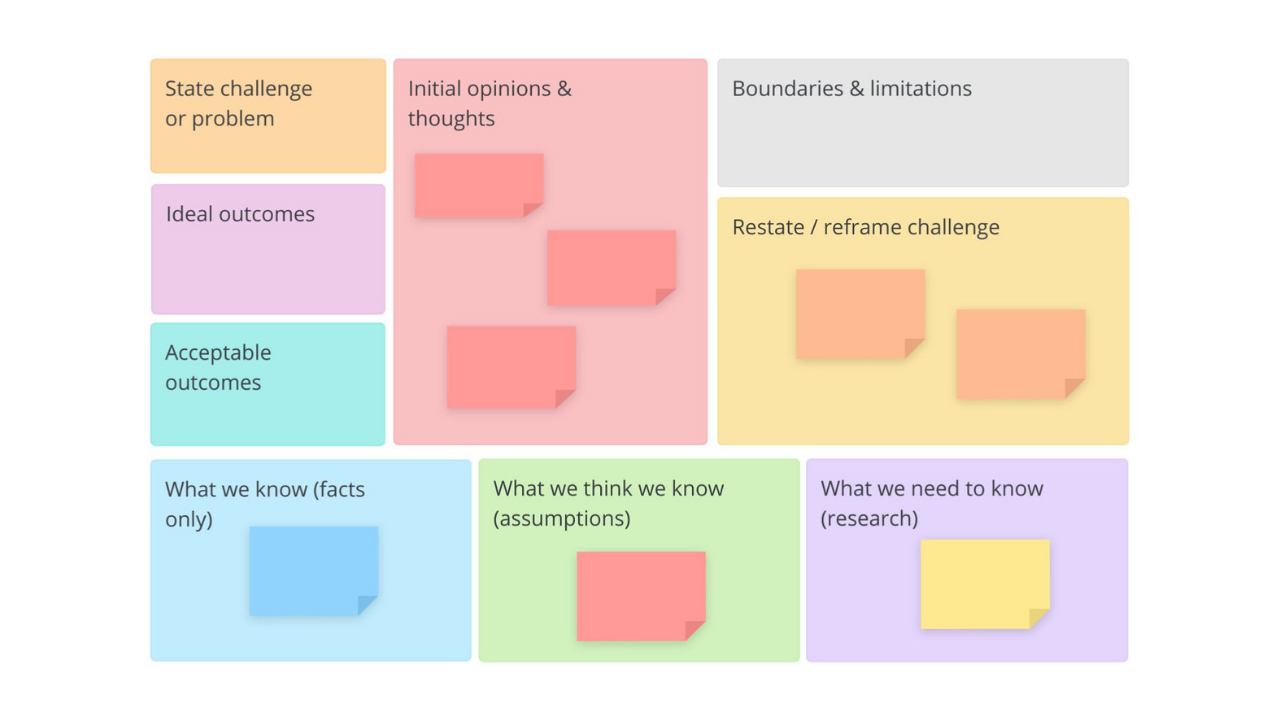Define and Understand Canvas template

The Define and Understand Canvas is a problem-solving framework that allows you to delve deeper into any problem or challenge to understand its context and potential outcomes. This template was created by Ayoa CEO and creative thinking expert, Chris Griffiths, and is featured in his book, The Creative Thinking Handbook.
What is the Define and Understand Canvas?
When faced with a problem or challenge, the Define and Understand Canvas allows you and your team to delve deeper into the problem and really understand its context, your goals and expectations for the outcome.
Why use the Define and Understand Canvas?
This tool encourages you to define and understand your challenge before trying to solve it. By getting to grips with the problem beforehand, you’re more likely to develop a strategic solution for better success.
How to use our Define and Understand Canvas template
Our Define and Understand Canvas template is broken down into different sections for you to easily capture and organize your ideas. Simply follow the steps below to get started.
To access the template, sign up to Ayoa. Once you've signed up, navigate to the homepage to create a new whiteboard, mind map or task board and choose this template from the library.
Start by outlining your problem and desired outcomes. Define your problem in as succinct a way as possible. Use language that invites exploration such as ‘How might we…?’ List your ideal outcomes (for if you had unlimited time and resources) and acceptable outcomes (a sufficient result).
Using sticky notes, capture your initial opinions and thoughts regarding the problem. Consider what needs to change, whether new ideas are needed and any boundaries and limitations you may face; be sure to go with your gut and record only your opinions, rather than actual ideas.
Restate or reframe your challenge by playing around with the wording. This will help you adjust your focus and discover the best solution. For instance, ‘increase team output’ might become ‘how could we make our job easier?’ – by putting a positive spin on the challenge, your teams’ opinions on the statement may be different and you’ll be able to tackle the problem with a fresh mindset.
It’s time to challenge any near-invisible assumptions you may already have. In the ‘What we know’ section, list all the facts about the problem; these must be true (i.e. you can back them up). Next, list your assumptions about the problem under ‘What we think we know’ (i.e. what you think is true but you’re not able to prove). Finally, determine what research needs to be done in the ‘What we need to know’ section.
You should now have a much better idea of what your problem is, how you can approach it, what the facts are, and what you need to find out. This Define and Understand Canvas template also works as a great tool if you’re presenting the problem to a wider team.
